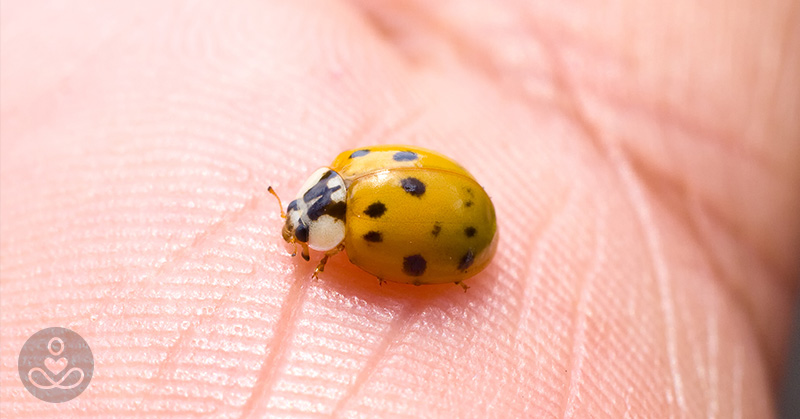When you notice a tiny, friendly ladybug sitting on your shoulder – their appearance is thought to herald good fortune. In reality, it might not be a ladybug at all – it could be a tree-dwelling multicolored Asian lady beetle, scientifically known as Harmonia axyridis.
The bad news is that these multicolored Asian lady beetles may be harmful! They have features identical to the ordinary little ladybug, but they are slightly larger, more aggressive, and come with a bite.
The native North American ladybug (Coccinella novemnotata), often referred to as ladybird beetles in Europe, are harmless and friendly in nature. One can spot the most subtle difference between Asian lady beetles and the native ladybug.
Fun Fact:
Lady beetles actually come from a large family known as Coccinella, and there is not just one lady beetle (aka ladybug in North America). For instance, the native North American lady beetle is 9 spotted (Coccinella novemnotata) whereas the native European lady beetle (aka ladybird) is seven spotted (Coccinella septempunctata) [1].
It is often difficult to differentiate the two: native ladybugs are nearly identical to multicolored Asian lady beetles for a layman. There are more than 5,000 different species of these insects with different temperaments, characteristics, and appetites, according to National Geographic [2].
Native ladybugs are harmless to humans, they do not bite and in fact, consume several harmful garden pests. The multicolored Asian lady beetle truly is an unwelcome guest for many homeowners because they tend to cause destruction.
Native to Asia, the beetle was imported to the U.S. and released as early as 1916 in an endeavor to control certain insect pests – according to the U.S. Department of Agriculture [3]. The first free field populations in the United States were found in Louisiana in 1988. Since then the beetle has expanded its range to other regions across the U.S.
While beneficial in some regards, these Lady beetles are more of a nuisance. “They search for overwintering sites in old homes and other buildings, in huge numbers. Thus these ladybugs become a nuisance when they inundate homes and start dwelling there,” says a representative from the USDA.
A study conducted at Penn State’s College of Agricultural Sciences [4], states that these beetles will bite and leave a yellowish defensive chemical which sometimes causes spotting on walls and fabrics. The fluid also has a foul-smelling odor, which annoys many people. According to the college, some people have experienced an allergic reaction when they came in contact with these defensive excretions.
So would you be able to spot the difference? Multicolored Asian lady beetles are slightly larger and come in a wider range of colors compared to the native ladybug [2]. Their significant feature, however, is the distinctive highly-visible black “M” design marked on their head [2].
In case you come across an infestation at your home, your first reaction may be to sweep away or try and remove these insects. But be warned – squashed or agitated beetles will exhibit a defensive response by releasing noxious yellow fluids.
The USDA suggests that house owners should seal any openings found in their ceiling or attic, once they are discovered. It is the only precautionary way of dealing with these invasive pests.
“Asian Lady Beetles that enter window frames and wall spaces in the fall and tend to congregate in the dark. They are a nuisance and only depart in spring in search of food. They are commonly found in attics, closets, crawl spaces, or storage areas. Some Lady Beetles are sid to become active in early spring and try moving into other areas in the house,” says the USDA.

